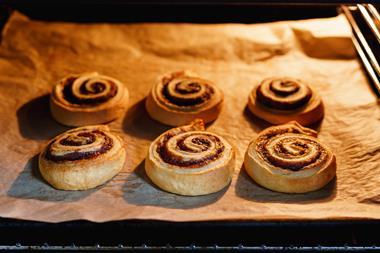Greenhalgh’s David Smart looks at the economy and assesses the year ahead in the light of the latest consumer shopping trends.
I cannot believe where this year has gone. How did we get to the end of 2014 so fast? It doesn’t seem two minutes since we were toasting in this New Year, or has some fiend turned up the speed dial on the time machine. Or is it, as I suspect, me getting older, knowing that my second grandchild is due to make an appearance in early January 2015?
On a personal basis, 2014 has been quite interesting on many fronts. The business had to say goodbye to some very high-profile, and long-standing, business colleagues that were customers. However, Greenhalgh’s has gained a very splendid export contract, which will fulfil all our wildest expectations in the coming months ahead. Quite a bitter-sweet year, with lots of lessons, but thankfully 2015 looks very rosy indeed.
It was once explained to me that the north west of England was always the very last to climb out of any recession; and I would certainly second that opinion. However, thankfully, the green shoots are making their appearance, and it’s not before time.
As an economy we are not over the parapet yet, as the government and its associated propaganda machine would have us believe. Listening to Radio 4 recently on the way home from the theatre, the guest speaker, an economist, quite openly said the economy and its related pay deals going forward would not reach the same levels until the year 2020. I can agree, and say that is a very realistic projection, given that pay deals within this business, and many others, have remained static for the past six years or more.
So, as a trade, just where are we heading in 2015?
Customers (retail shoppers) have finally realised that the big four, especially ‘every little helps’, have had a knack of making you over-shop, so that you buy all the things you don’t need, instead of the things you do.
Now, consumers almost wear the fact that they shop at the big discounters on their arm as a fashion statement.
However, this has a drawback - predominantly that the big four are losing market share at an alarming rate and are therefore slashing prices in a knee-jerk reaction to fight back. But, the damage has already taken hold. As customers’ shopping habits are predominantly loyal, once they move loyalty, there have to be ground-shaking reasons to move back.
Prices are now falling, and it’s a race to the bottom of who can undercut the next man. Product quality is now not even on the quality assurance specifications; they say it is, but that sheet is in the bottom drawer of their office in the back streets of Hong Kong.
Buyers at the big four are targeted to savagely reduce costs, which they do via their suppliers of course. And, if those suppliers want a listing, they have to pay, BIG TIME.
To my mind, the retail food market is dividing more into two mainstream categories: cheap and desperate or quality and value for money. Product quality is an overused, misinterpreted term, in my opinion. They use it as a ‘byline’ and have no comprehension of what it actually means. A product doesn’t have to be very expensive to be of good quality.
Asda, strangely enough, said in the last year or so, that it must ‘innovate or die’ and this term resonates with me as it is one that I find to be true.
Most of our growth at Greenhalgh’s - and that of my colleagues, over the past twelve months - has been based on pure innovation, in both strategic management practices within the business or products.
Within our wholesale business, this innovation is giving our customers the edge on their competitors. For our retail customers it is giving them choice, variety and uniqueness.
If you are unique within your own marketplace, then cherish that idealism, market it, shout it out loud with all your stamina. Your customers will buy into you and your business because of this innovation.
So, ahead of the New Year and all that brings for the industry, may I wish you and all your families a very Happy Christmas.
David Smart


























No comments yet